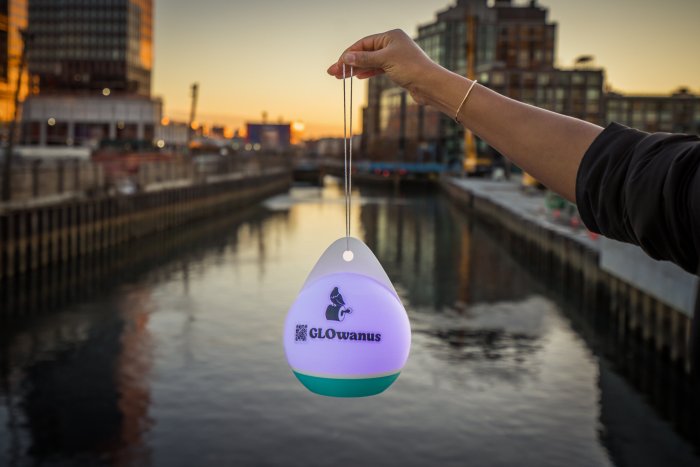This month’s tornado uprooted trees, tore off the roofs of houses and also served up a stinky and B-movie-style reminder of why the Gowanus Canal is such an environmental disaster.
During the Sept. 16 deluge, a tidal wave of untreated raw sewage was unleashed upon the forsaken canal, a river of bile so rich in excrement that the waterway’s usual fluorescent blue was transformed into a deep chocolate brown in roughly 90 seconds.
According to the Department of Environmental Protection, the tornado dumped nearly half an inch of water in only 15 minutes — an especially high amount in such a short period of time — leading to a sewage overflow far worse than during normal rainstorms.
Kevin Howard, who works in a film production office on the canal, was savvy enough to capture the vile flood as it happened, and the video he posted on YouTube has been watched more than 18,000 times.
“It smelled the same as a septic tank,” said Howard. “I was dry-heaving and other people were, too.”
The “s— storm” is a byproduct of the city’s 130-year-old sewer system, which carries both rainwater and wastewater — and dumps raw sewage into the waterway during all heavy rains, when the antiquated system becomes so overburdened that feces-filled water gets diverted away from overwhelmed sewage plants into the canal and other waterways.
The system “works” in so much as it diverts sewage away from treatment plants that are at maximum capacity.
This messy business is nothing new — though the amount of Combined Sewer Overflow, as city officials call it, has diminished since the 1980s. The reduction in pollution is one reason that developers have begun lusting to build along the canal, which separates tony Park Slope and Carroll Gardens. But the continued stink was also a motivating factor for the canal being added to the federal Superfund list in March.
Both developers and federal environmental officials would be stunned by the poo onslaught captured by Howard, who started filming just after the storm passed at around 6 pm. His footage depicts a flood of Biblical proportions — if the Bible was written by a disgruntled restroom attendant.
In just over a minute, the torrent of waste had completely covered a one-block stretch of the 100-foot-wide canal.
Howard could not believe his eyes, and began to wretch at the smell from the vile restroom rejects, a repulsive tsunami of waste.
“It’s sort of a big joke within our office now,” said Howard, who works in a film production office that overlooks the canal. “We’re in the most disgusting part of Brooklyn, probably.”
It would cost at least $58 billion to completely separate the combined sewer system in the city.
Many ideas have been proposed to reduce the Combined Sewer Overflow, including a cistern system in every building that would retain excess wastewater until the rainfall had passed and the sewers were no longer operating at capacity.
Another is the “Sponge Park” proposed along the canal, which would capture some excess rainwater in foliage and lawns.
The city is currently spending $85 million in improvements to a wastewater pumping system, which will improve the water quality of the Gowanus.
Mayor Bloomberg also announced this week a new program that will utilize new eco-friendly infrastructure that will capture more storm water, technology that he hopes will reduce the sewer overflows into the city’s waterways by 40 percent by 2030.
All the work, however, will not completely eliminate the horrors of the Sewer Overflow.
Pray for drought.


















